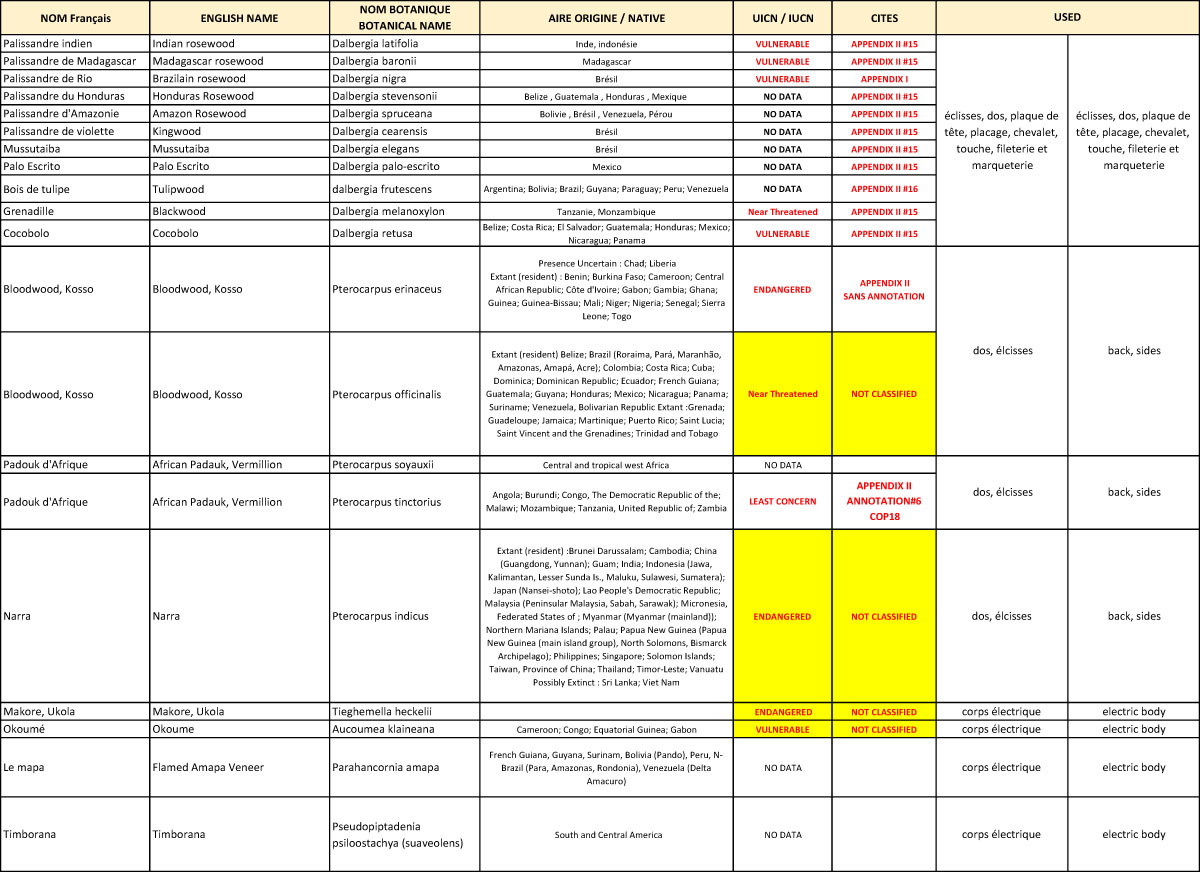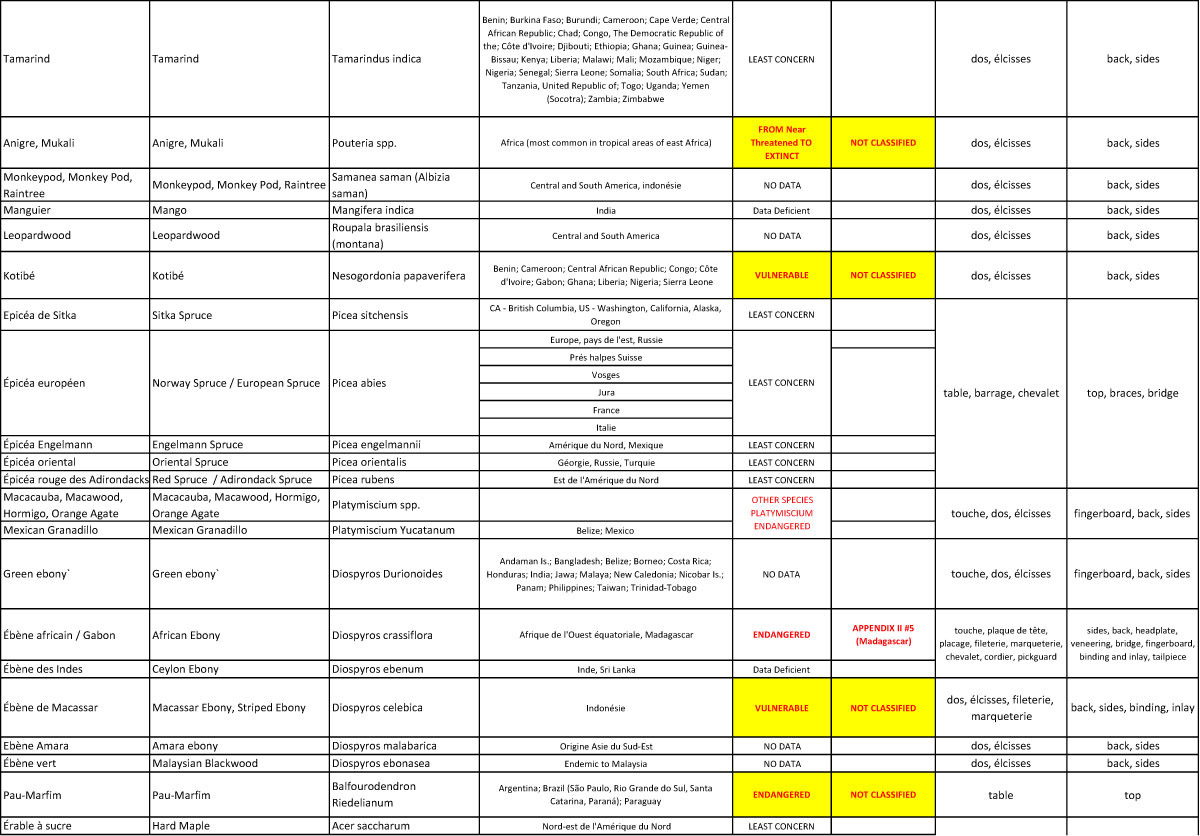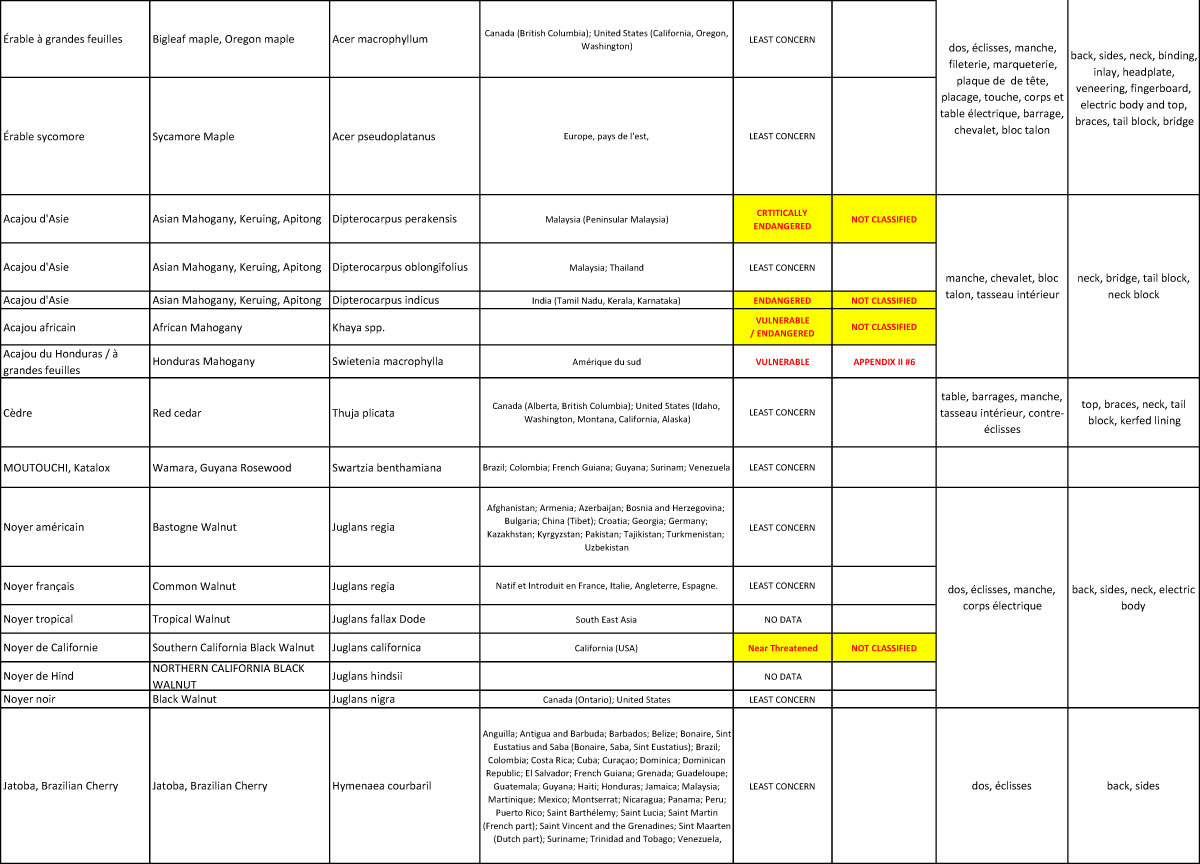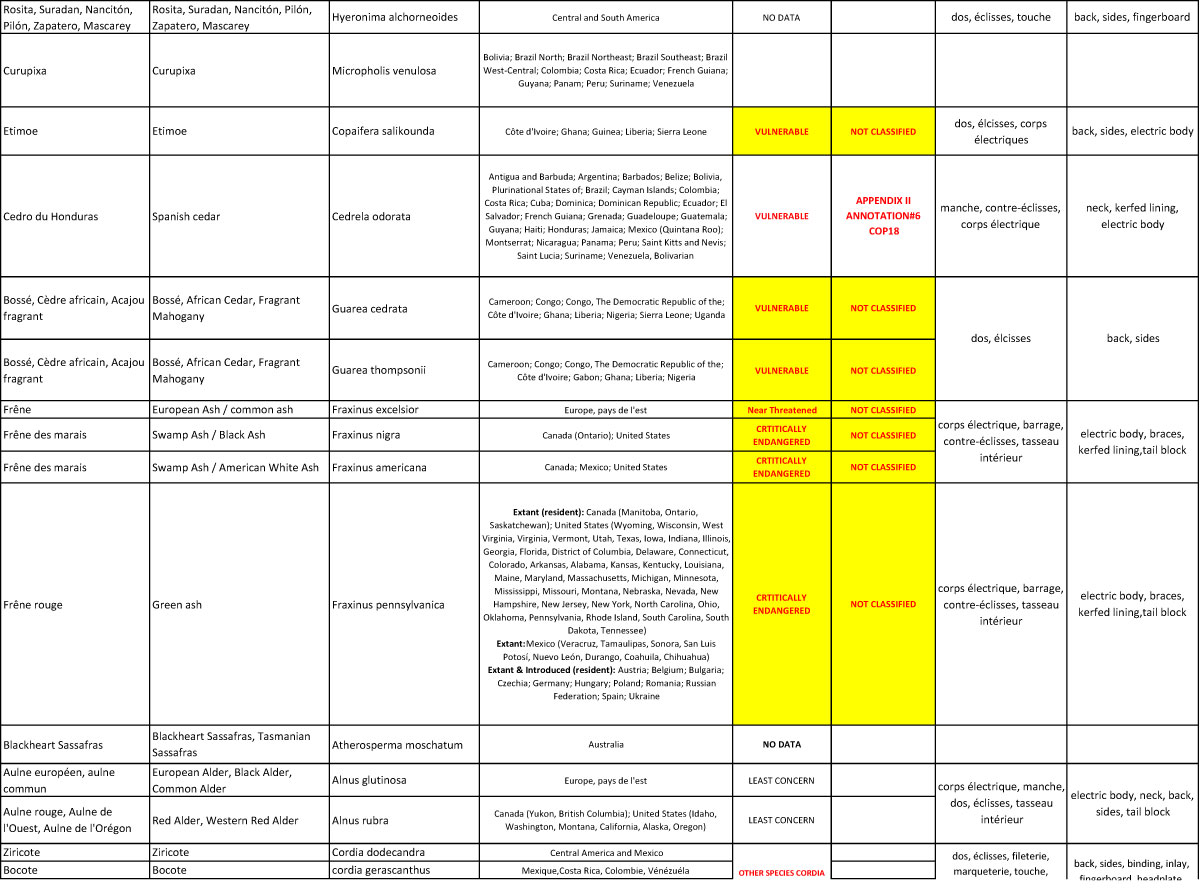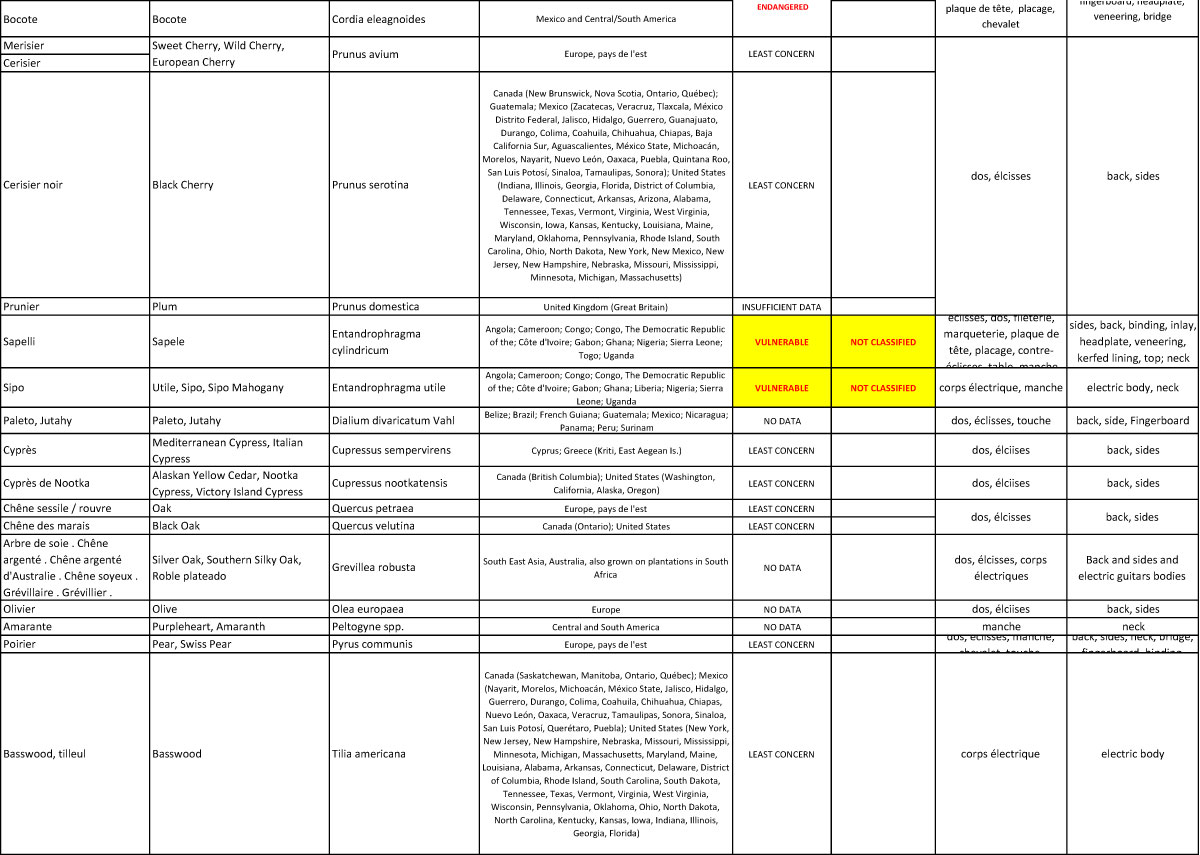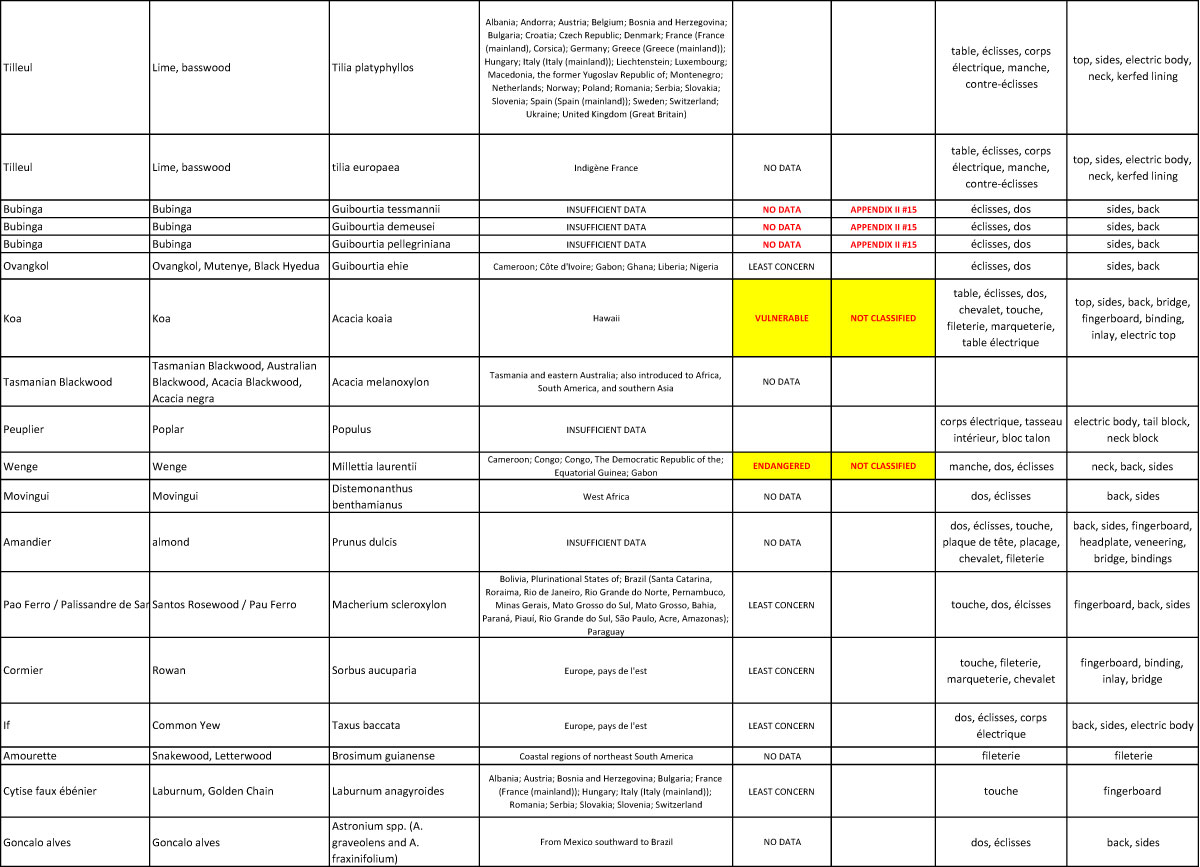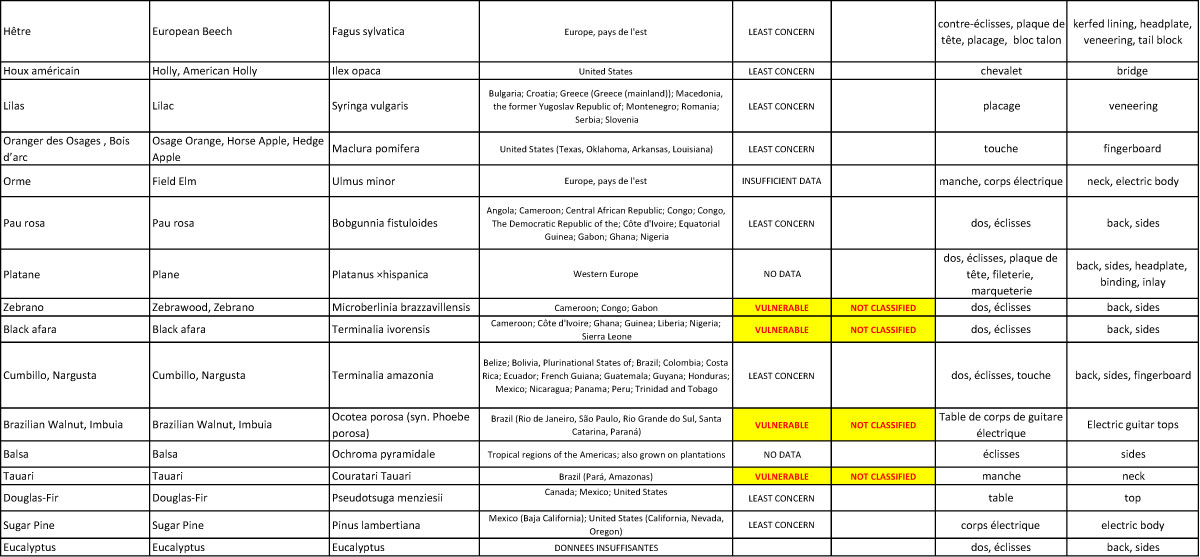TO BETTER UNDERSTAND, TO BETTER KNOW THE TONEWOODS TO BETTER PRESERVE THEM
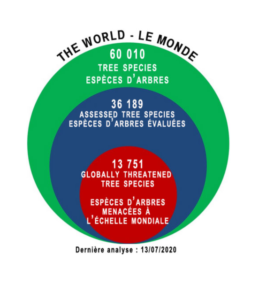
Musical instruments are hit hard by the human frenzy which consists in drawing all the natural resources of our planet without having the good sense to renew them other than by monocultures which destroy biodiversity!
The facts are real and very disturbing, we have reached the point where all the wood resource used for the manufacture of musical instruments decreases each year and irreversibly for some species that are mainly and massively used by other sectors of activity like furniture.
The musical instruments become a real collateral damage because they use a tiny part of the cut and exported woods. The guitar is particularly impacted because wood, the main raw material, is one with the instrument and the diversity of species used has been an integral part of its history for centuries.
Regulations such as CITES, which control the international trade in endangered species of fauna and flora, tend to protect more and more species. But the economic mechanism of replacing a protected species with a similar one that is unregulated accelerates the process of depleting the resource with the risk that it will quickly become banned from any trade.
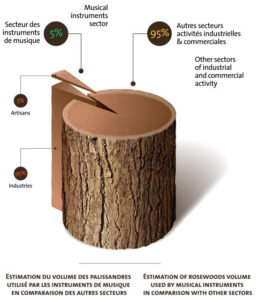 The alternative of local woods for guitar luthiers, for example, has also become a problem to be mastered in view of the « enrésinement » (total or partial replacement of a hardwood stand by softwoods) and industrialization of wood with the disappearance of slow-growing species in favor of fast-growing species. In addition, most of the French wood that can be used in musical instruments making is found, either for export to return to France in the form of finished products, or as firewood, leaving the artisan luthier with only a constantly diminishing stock.
The alternative of local woods for guitar luthiers, for example, has also become a problem to be mastered in view of the « enrésinement » (total or partial replacement of a hardwood stand by softwoods) and industrialization of wood with the disappearance of slow-growing species in favor of fast-growing species. In addition, most of the French wood that can be used in musical instruments making is found, either for export to return to France in the form of finished products, or as firewood, leaving the artisan luthier with only a constantly diminishing stock.
Other scourges fall on the woods such as diseases caused by insects and fungi, favored by climate change or even the illegal trade which has become a very lucrative market for the mafia who does not hesitate to kill those who militate against the illegal deforestation.
The situation is therefore more than alarming and we must act to participate in the preservation of the primary forests so important for the future of our craft, our instruments but also and above all for humanity.
The International Union for the Conservation of Nature Red List (red list) – IUCN: Established in 1964, the International Union for the Conservation of Nature’s Red List of Threatened Species has become the most important source of information. world-wide report on the global status of animal, fungal and plant species in conservation.
The IUCN Red List is used by CITES, government agencies, wildlife departments, conservation NGOs, natural resource planners, educational organizations, students and the business community. The Red List process has become a massive undertaking involving IUCN Global Species Program staff, partner organizations and experts from the IUCN Species Survival Commission and partner networks that compile information on species to make the IUCN Red List the indispensable product it is today.
What is the IUCN status of a species ?
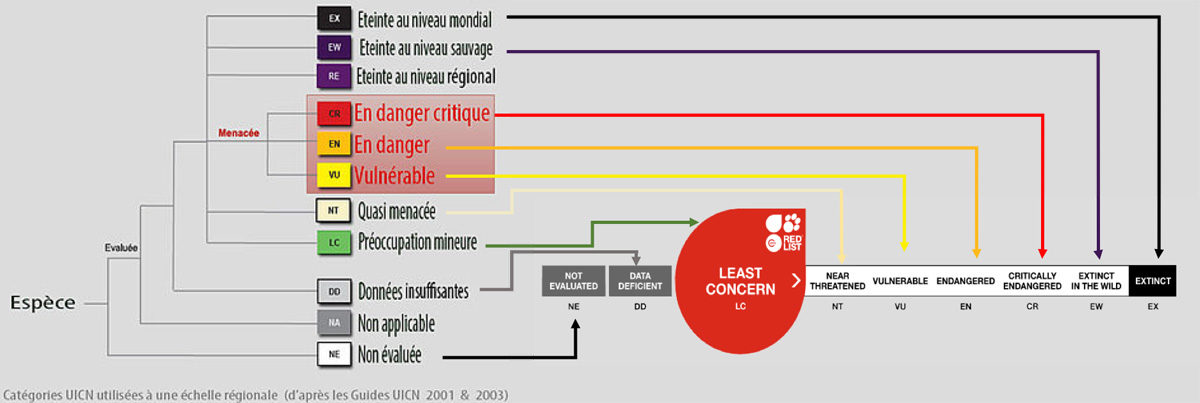
In early 2019, the APLG launched a study as part of the 7th edition of the Salon de la Belle Guitare (Guitares au Beffroi) with exhibitors to whom we asked to list all the woods that were used for the guitars that they were going to exhibit at the show.
In total, 69 species were identified, mostly with the common name of the wood, rarely the botanical name, and for which we sought additional information in order to produce the table below.
At the end of 2019, other species were added for a total of 123 species of wood used in guitar but also in other musical instruments.
At the start of 2021, a new study is underway to complete and update this table. Data publication to come.
Last updated: october 16, 2019 – this page is regularly updated (LIST NON-EXHAUSTIVE)
- 123 species have been identified that can be used to make a guitar;
- 62% (76) of these 123 species are tropical species;
- 41% (50) of the 123 species have a worrying status (37% (45) tropical species, 4% (5) non-tropical);
- 59% (45) of the 76 tropical species have a worrying status;
- Only 34% (17) of species with a worrying status (tropical or non-tropical) are regulated by CITES;
- 66% of species with a worrying status continue to be exploited and traded despite their IUCN status equivalent to or greater than « Near Threatened ».
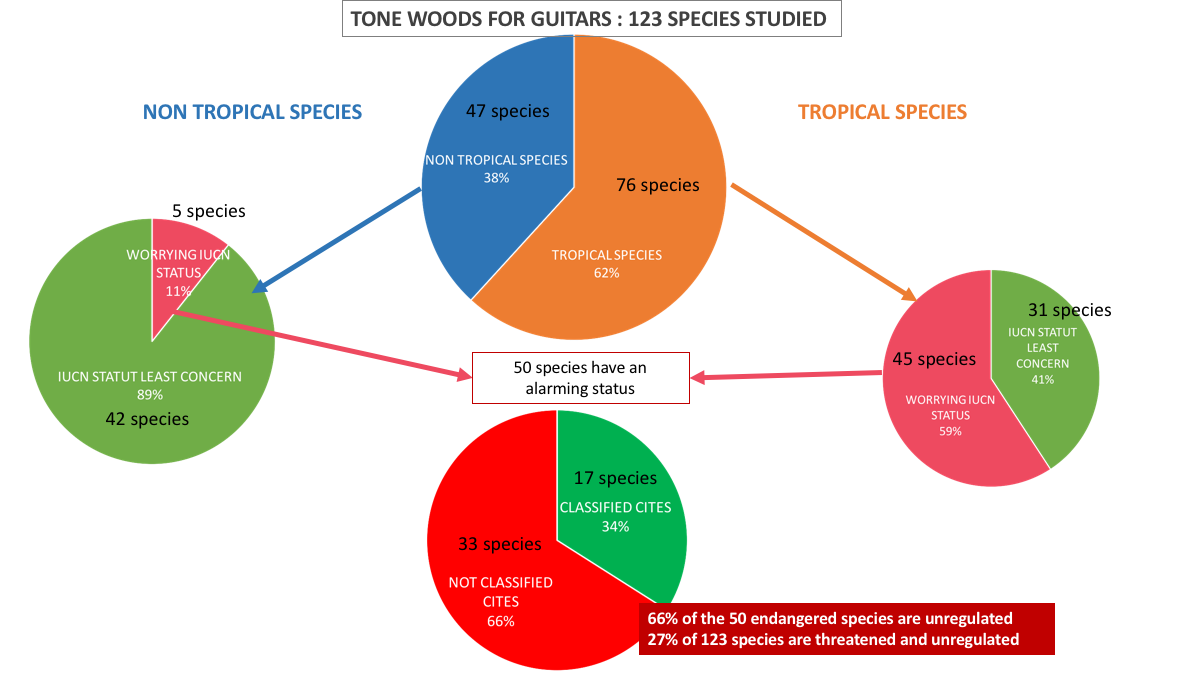
There are many woods threatened but unregulated to date (cells in yellow).
